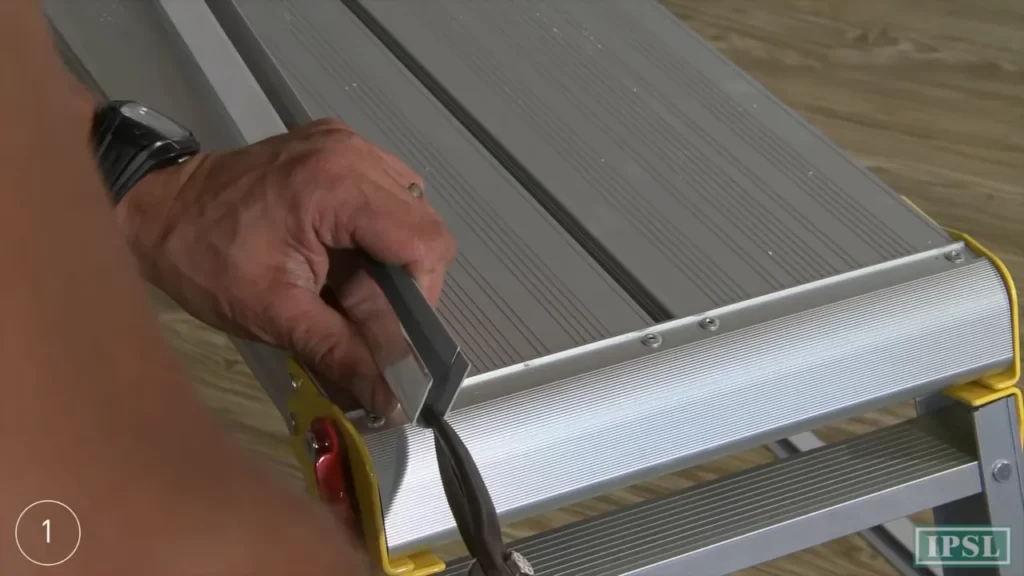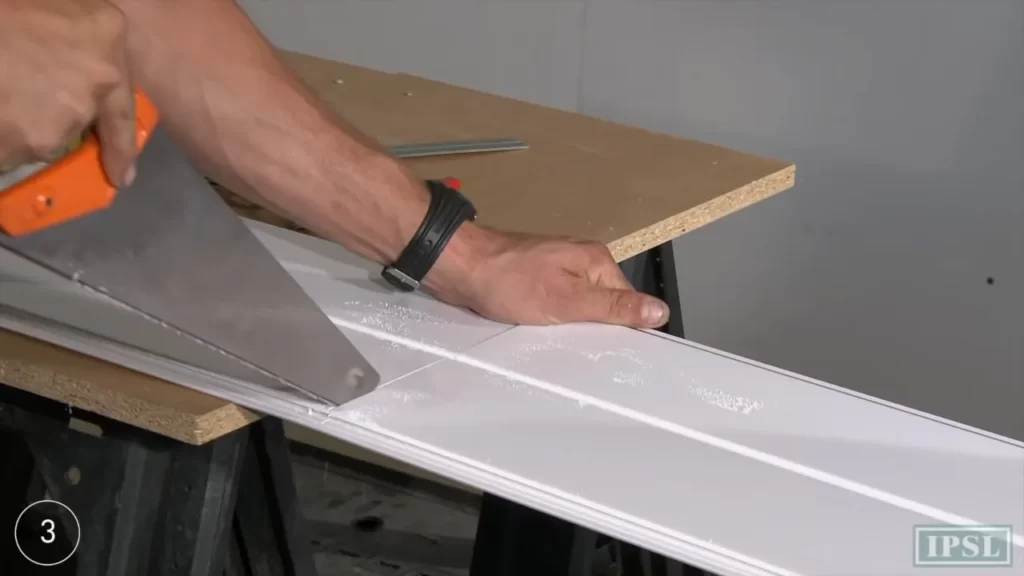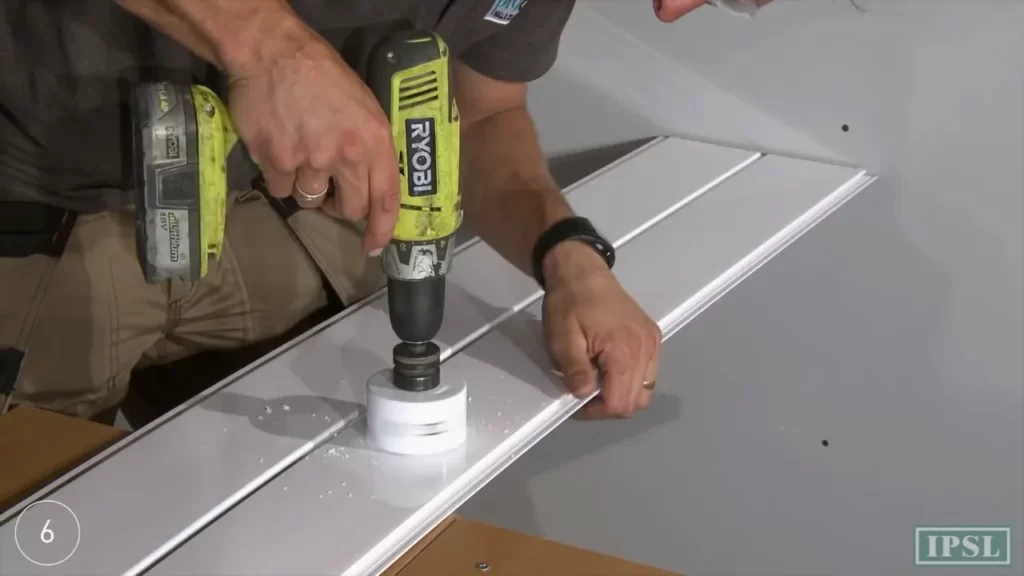To install PVC ceiling tiles, begin by measuring the area you want to cover. Next, cut the tiles to fit the space and attach them using adhesive or screws.
Benefits Of Pvc Ceiling Tiles
Benefits of PVC Ceiling Tiles:
PVC ceiling tiles offer numerous benefits that make them a popular choice for homeowners and businesses alike. Their durability and longevity ensure that they will last for years, providing a cost-effective solution for ceilings. These tiles are also highly resistant to moisture and mold, making them ideal for areas with high humidity or prone to water damage.
One of the key advantages of PVC ceiling tiles is their easy installation and maintenance. With their lightweight design and interlocking edges, they can be easily fitted into place without the need for professional assistance. Additionally, cleaning and maintaining PVC ceiling tiles is a breeze – simply wipe them down with a damp cloth to keep them looking pristine.

In short, PVC ceiling tiles offer a durable, moisture-resistant, and hassle-free solution for enhancing the aesthetic appeal of any space. Their easy installation and low maintenance requirements make them a top choice for those seeking an efficient and cost-effective ceiling option.
Step-By-Step Guide: How To Install Pvc Ceiling Tiles
In order to install PVC ceiling tiles, you need to gather the necessary tools and materials for the project. These include a tape measure, a utility knife, adhesive or adhesive tape, a level, and a ladder or scaffolding for reaching the ceiling. Once you have all the tools and materials ready, you can move on to preparing the ceiling surface. This involves cleaning the ceiling to ensure it is free from any dust or debris.
After preparing the surface, you can measure and mark the installation area for the PVC ceiling tiles. Use a tape measure to determine the dimensions of the area and mark the boundaries with a pencil or marker. It’s important to measure accurately to ensure a proper fit for the tiles. With the area marked, you can now proceed to the installation process.
Installing Pvc Ceiling Tiles
To install PVC ceiling tiles, start by applying adhesive to the back of each tile. Make sure to use a strong adhesive that is specifically designed for ceiling tiles. Next, align the first tile with the desired starting point and press it firmly into place, ensuring that it is level and flush with the surrounding tiles. Then, continue the installation in a specific pattern, following the manufacturer’s instructions.
It is important to take your time and pay attention to detail during the installation process. Ensure that each tile is properly aligned and pressed into place, as this will ensure a smooth and professional-looking finish. Additionally, make sure to allow the adhesive to dry thoroughly before applying any finishing touches or accessories to the ceiling.
Tips For A Successful Installation

Installing PVC ceiling tiles can be a great way to enhance the aesthetics of your space. To ensure a successful installation, it is important to pay attention to certain factors. First, **proper alignment** and **spacing** are crucial. Make sure to measure and mark the area where the tiles will be installed to achieve a uniform look. Second, **trimming** the tiles to fit around fixtures or edges is necessary. Carefully cut the tiles to ensure a seamless fit. Lastly, **check** for any loose or unsecured tiles during and after the installation process. This will prevent potential issues in the future. Follow these tips, and your PVC ceiling tile installation will be a smooth and visually appealing process.
Maintenance And Cleaning Of Pvc Ceiling Tiles
Maintenance and Cleaning of PVC Ceiling Tiles Regular dusting and wiping are essential for maintaining the cleanliness and appearance of PVC ceiling tiles. Dust particles can accumulate over time, causing the tiles to lose their shine. Use a soft cloth or sponge and gentle cleaning solution to wipe away the dust and dirt. For stubborn stains and discoloration, you may need to use a mild detergent or specialized PVC cleaner. Apply the cleaner to a cloth and gently scrub the affected area, taking care not to damage the tiles. Rinse with water and dry thoroughly to prevent any residue or water spots. It’s also important to take precautions to avoid damage to the tiles. Be careful when installing, moving or rearranging furniture near the ceiling to prevent accidental scratches or dents. Additionally, avoid using harsh chemicals or abrasive materials that can scratch or discolor the tiles. With regular maintenance and cleaning, your PVC ceiling tiles can maintain their beauty and durability for years to come.

| Regular dusting and wiping | Removing stains and discoloration | Taking precautions to avoid damage |
|---|---|---|
| Dust particles can accumulate over time, causing the tiles to lose their shine. Use a soft cloth or sponge and gentle cleaning solution to wipe away the dust and dirt. | For stubborn stains and discoloration, you may need to use a mild detergent or specialized PVC cleaner. Apply the cleaner to a cloth and gently scrub the affected area, taking care not to damage the tiles. Rinse with water and dry thoroughly to prevent any residue or water spots. | Be careful when installing, moving or rearranging furniture near the ceiling to prevent accidental scratches or dents. Avoid using harsh chemicals or abrasive materials that can scratch or discolor the tiles. |
Faq
PVC ceiling tiles offer a hassle-free solution for adding style and elegance to any space. One common question is whether these tiles can be painted. The answer is yes, you can paint PVC ceiling tiles to match your desired color scheme or decor. It is important to clean the tiles thoroughly before painting and use a high-quality paint that adheres well to plastic surfaces. Another query often raised is whether PVC ceiling tiles are suitable for all types of ceilings. Yes, these versatile tiles can be installed on various types of ceilings, including drywall, concrete, or even popcorn ceilings. However, it is essential to ensure a secure and stable installation. Lastly, many wonder if PVC ceiling tiles can be used in wet areas such as bathrooms. Unfortunately, PVC is not recommended for wet areas as it may not withstand prolonged exposure to moisture. It is better to opt for tiles specifically designed for damp environments to maintain their longevity and appearance.
Frequently Asked Questions On How To Install Pvc Ceiling Tiles
How Do You Install Pvc Ceiling Sheets?
To install PVC ceiling sheets, follow these 5 guidelines: 1. Measure and mark the ceiling for accurate placement. 2. Apply adhesive to the back of each sheet. 3. Align the sheet with the marked lines and press firmly. 4. Secure the sheets with screws or nails along the edges.
5. Repeat the process for each sheet, ensuring they fit snugly together.
How Do You Install Plastic Ceiling Tiles?
To install plastic ceiling tiles, follow these steps: 1. Measure and mark the area where you want to install the tiles. 2. Prep the ceiling by cleaning it and ensuring it’s smooth and dry. 3. Apply adhesive to the back of the tiles and press them firmly onto the ceiling.
4. Use a level to ensure the tiles are installed straight and aligned. 5. Trim any excess tiles to fit the edges if necessary.
How Do You Stick Pvc To Ceiling?
To stick PVC to the ceiling, follow these steps: 1. Clean the surface thoroughly. 2. Apply a suitable adhesive to the back of the PVC panel. 3. Press the panel firmly against the ceiling and hold it for a few seconds.
4. Use nails or screws to secure the panel in place, if necessary. 5. Allow the adhesive to dry completely before moving or adjusting the panel.
Conclusion
Installing PVC ceiling tiles is a cost-effective and efficient way to transform the look of your space. By following the step-by-step process mentioned in this blog post, you can easily achieve a professional finish. From preparing the surface to measuring and cutting the tiles, this guide has covered everything you need to know.
